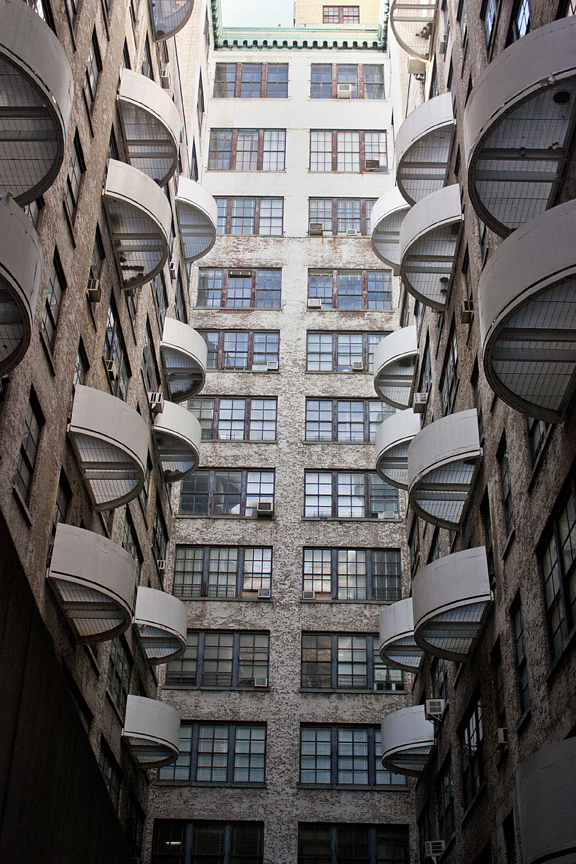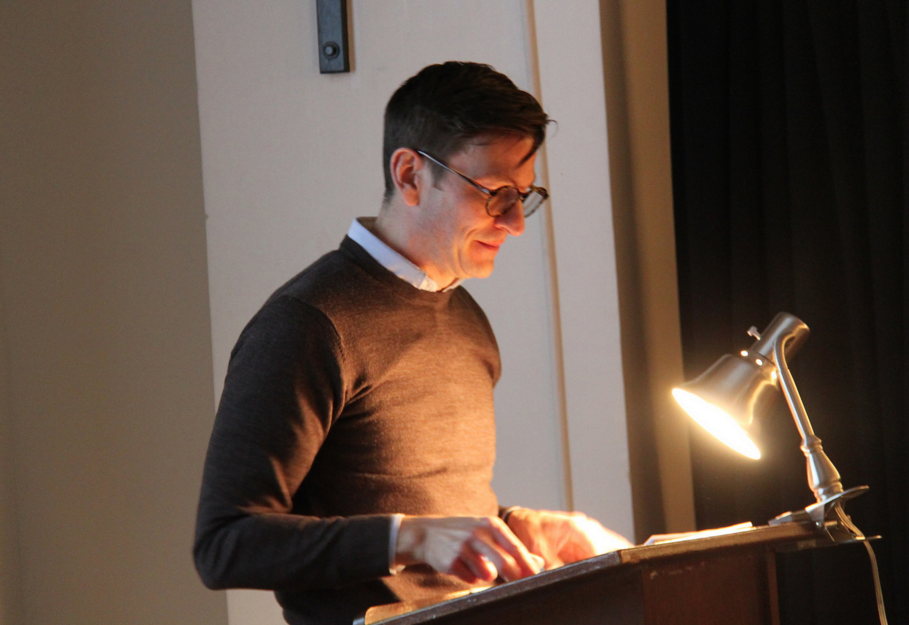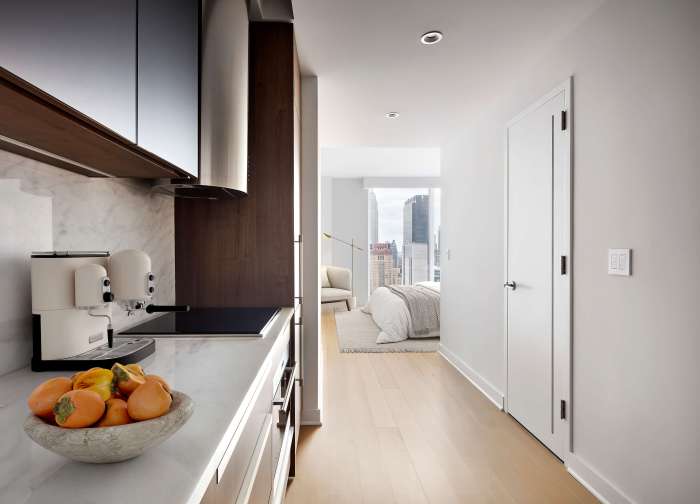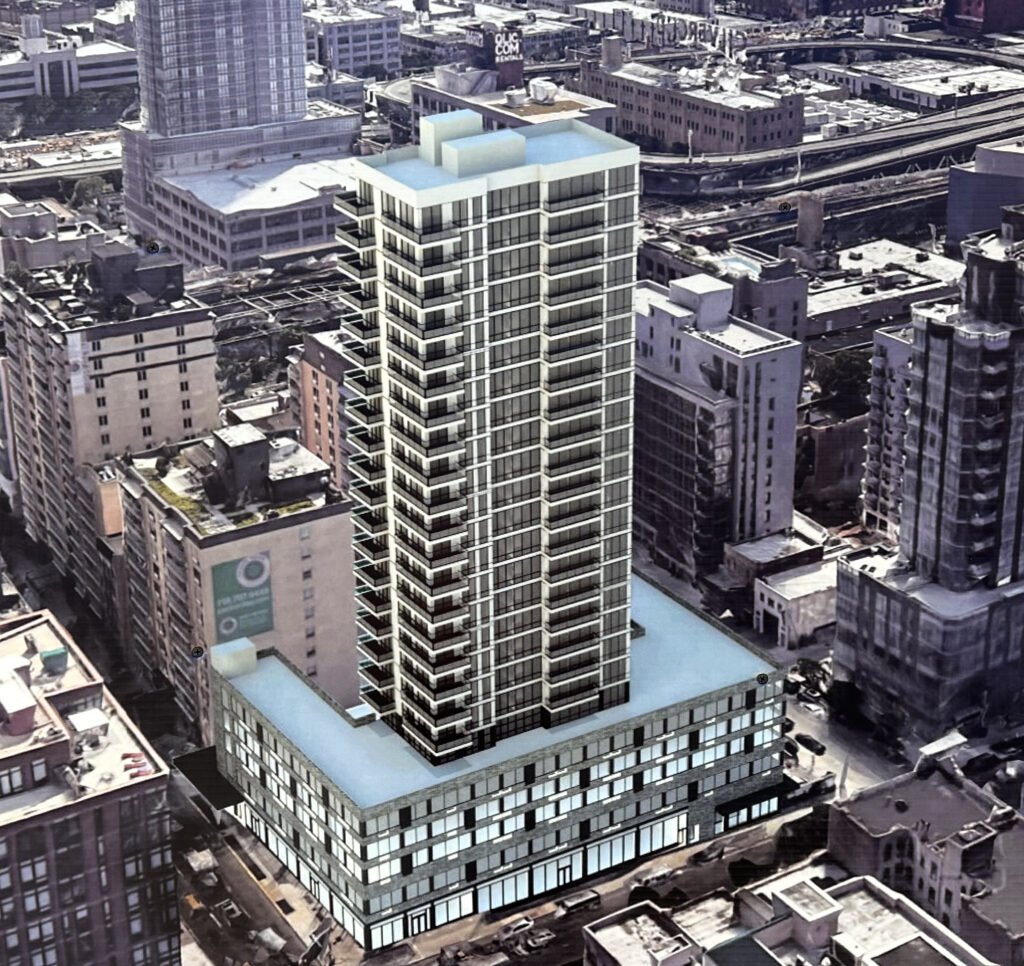BY ALBERT AMATEAU | Jeffrey Trask, professor of American cultural and intellectual history, found the perfect place to present his lecture on “The Social Geography of Village Housing in the Sixties.”
The March 3 lecture in the community room of the Westbeth Artists Residence focused on Westbeth, which opened in 1970 as the first large-scale conversion of industrial space to residential use.
Trask, who teaches at Georgia State University in Atlanta, recalled that his research in 2010 took him to the elaborate and beautiful library of the New-York Historical Society, with its strict rules.
“Then I came to Westbeth and asked to see whatever records they had,” Trask said. “I was taken to the basement and given a key to a room stacked to the ceiling with boxes of documents.”
The remark was greeted with knowing laughter from longtime residents of the 13-building complex.
Trask’s talk, co-sponsored by the Greenwich Village Society for Historic Preservation, Westbeth Artists Residents Council and Village Alliance business improvement district, covered the conception and development of Westbeth and the political context of the era.
It was hoped that the conversion of the Bell Laboratories complex between West and Washington Sts. from Bethune to Bank Sts. would serve as a model for living and work space for low-to-moderate-income artists.
That didn’t happen. Instead, Westbeth actually ironically became a model for luxury residential conversion of abandoned industrial buildings.

Beginning in the 1960s, the idea of “the bulldozer approach” to urban renewal was falling out of favor, Trask noted.
Jane Jacobs published “The Death and Life of Great American Cities” in 1961. Robert Moses’ plan for the Lower Manhattan Expressway, which would have cut across Soho and Little Italy, was dropped in 1962.
The Committee to Save the West Village mounted an aggressive, media-savvy campaign that forced the city in 1962 to drop a plan to demolish and rebuild 14 blocks in the West Village.
“Committee members at one point went to a City Hall hearing in a tour bus designed by Salvador Dali,” Trask said.
The preservation movement gained momentum in the 1960s. Activists lobbied to prevent demolition of the Jefferson Market Courthouse at W. 10th St. The long-vacant building reopened as a library in 1967. It was in the 1960s that artists began using Soho warehouse lofts illegally as combined living and work spaces, many of which became legal in 1971.
City planners and urban critics viewed the dilapidated Hudson River piers, empty factories, the little-used elevated railroad (the High Line) and the elevated Miller Highway, which was demolished and replaced in the 1980s, as a desolate area, but still had a hope for future transformation.
The Westbeth vision was developed by J.M. Kaplan, founder of the J.M. Kaplan Fund, and Roger L. Stevens, a theatrical producer and the first president of the National Endowment for the Arts.

Privately developed with federal help, the project was supposed to become self-sufficient after a while. An alternative to public housing, which had begun to be discredited, the project was intended as an arts incubator; artists were supposed to live and work there for five years, then move on, making room for a new group of artists.
In 1966, Bell Labs had left the Village, its home since 1898, and moved to New Jersey. Kaplan, who had made his fortune marketing Welch’s grape juice, which he later sold to the grape growers’ cooperative, was able to buy the vacant one-block complex in 1967 for $750,000 from AT&T, Trask noted.
Among the project’s prominent supporters was Henry Geldzahler, curator of American art at the Metropolitan Museum of Art and later commissioner of the city’s Department of Cultural Affairs in the Koch administration.
Kaplan and Stevens, along with Kaplan’s daughter, Joan Davidson, lobbied hard at City Hall to rezone the West Village to accommodate the project. They named it after two of its boundaries, West and Bethune Sts.
Stevens, who had considerable clout with the Johnson administration in Washington, was able to secure favorable loans from federal agencies. Resident artists had to have moderate incomes in order for Westbeth to qualify for federal loans.
Kaplan and Stevens hired Richard Meier as the architect to convert the complex into residential and studio space. They also hired Dixon Bain as project manager. Bain, who had previously worked for AT&T, knew the complex and, working with Meier, helped keep everything on track during the 1967-71 construction period. Meier won an AIA (American Institute of Architects) award for the project in 1971.
Although treasured by its residents and widely admired as a “noble experiment,” Westbeth never fulfilled its original promise, Trask said. By the time the project was complete, rent for loft space in the city had risen beyond the means of most artists, so residents did not move out of Westbeth after five years as originally planned. Trask concluded that Westbeth was a social success but did not succeed financially.
The audience last week, made up of Village neighbors and Westbeth residents, responded to the lecture with enthusiasm. George Cominskie, president of the Westbeth Artists Residents Council, later recalled the precarious finances of the complex.
“We almost were bankrupt twice,” he recalled.
Cominskie also noted the dangerous environment of the West Village in 1990.
“We formed a neighbor patrol group, working with the Guardian Angels,” Cominskie said, referring to the uniformed volunteer anticrime group. “So many of our tenants were being mugged at night that we gave each one a whistle and told them to blow it whenever they felt threatened. Everyone in the neighborhood knew the sound and called the police when they heard it.”
The crime threat has receded, Cominskie said.
“Our main issue now is affordability,” he added.
Westbeth, with 384 units, a residents’ art gallery and a theater connected to The New School, has about 1,200 residents. Rents average more than $750 per month.

















